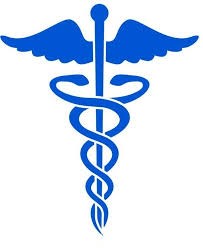Experiences of Healthcare Workers During Covid-19

Nearly a year has passed since the Coronavirus pandemic began. With the wavering numbers of COVID-19, the number of people contracting this respiratory disease fluctuates as time goes on. Now that winter months are here, COVID-19 cases are increasing more than ever before. Healthcare workers who had to isolate themselves for the sake of others due to the pandemic were able to experience a brief return to their families and friends. However, with the recent surge of COVID-19 cases, it appears as though things may have to revert back to the state of the world months prior.
New to this pandemic, many healthcare professionals are trying to adapt to unfamiliar situations. Hospitals, clinics, nursing homes, and countless other locations all have stricter conditions and regulations due to COVID-19. This includes having to wear additional protective personal equipment (PPE), ensuring strict testing every one or two weeks, and the importance of following protocol – such as having to wear masks all day long. In addition to that, we sparingly know how healthcare workers are faring in their workplace. Given that the second wave of COVID-19 has arrived, healthcare workers will have to continue adapting until the cases abate. Here are some answers from healthcare workers during the second wave of COVID-19, including Virgilio – a certified nursing assistant at a Nursing Home, Mrs. Bott – an ER nurse, and Rosette – a pediatric nurse.
How are you coping with the surge in COVID-19?
Virgilio: I am handling it well, we just have to follow protocol.
Mrs. Bott: Well, I have been doing little projects around the house to help cope with any extra stress that I take home from work. I especially like redecorating.
Rosette: I work in a pediatric hospital in Orlando. We have been very fortunate not to see COVID-19 surge into our hospital.
Are there more mild cases than severe ones?
Virgilio: Yes, in the nursing home where I work, there are more mild cases than severe cases.
Mrs. Bott: There are very severe cases and people need to take this wave of COVID just as seriously as they did in the Spring ,if not, more seriously.
Rosette: The pediatric population has been very resilient to COVID-19. We have only seen a small amount of hospitalization due to COVID-19. Many pediatric patients that get infected with COVID-19 show no symptoms at all and if they do show symptoms, they are manageable at home.
Are the patients without COVID-19 separated from the ones that contracted it, if so, are there different nurses/doctors that work in that ward specifically?
Virgilio: The non-COVID patients are separated from COVID patients to ensure that the ones without COVID don’t contract it.
Mrs. Bott: I work in the Emergency Room and there is little separation between the COVID and non-COVID patients. We do our best, but it’s next to impossible when we have over 300 patients to care for. The advice I have for everyone is, unless you are really sick, stay home and stay away from the hospital because it’s very likely if you don’t have it, you’ll contract it.
Rosette: Yes, COVID-19 patients are separated. I work in the operating room. We take care of 1 patient at a time. We have a special room for COVID-19 patients. It is called a negative pressure room where air is sucked into the room to prevent the spread of the virus.
Do you still have to wear PPE(Gown, shield, masks, gloves) all day long? If not, is it just the masks you need to wear?
Virgilio: You have to wear PPE if you are working or interacting with COVID patients, however, if you are not, then a mask is fine.
Mrs. Bott: PPE is extremely important and is a lifesaver. We don’t take it off the entire shift. Many of us don’t eat or drink for the entire 12-hour shift because we don’t want to be unnecessarily exposed.
Rosette: All patients that go into surgery get tested for COVID-19. If a patient is positive and surgery is elective and not urgent, patients get retested at a later date and surgery is postponed until they test negative to COVID-19. If surgery is urgent and they are COVID-19 positive, the entire surgical team wears PPE. PPE for COVID-19 positive patients includes an n-95 mask or elastomeric mask, surgical mask on top of the n-95 mask, eye protection, gowns and gloves.
Due to the low economy, were many nurses and/or doctors laid off or put into unemployment for the time being?
Virgilio: No there weren’t many healthcare workers that were laid off.
Mrs. Bott: No. We need all the healthcare workers we can get. My shift was changed from my normal 7am-7pm to 3pm-3am in order to cover, but that happens based on the need to cover certain times of the day.
Rosette: At our hospital, no nurses or doctors were laid off.
What are other struggles you face that are unknown to the public?
Mrs. Bott: I feel like the public has no idea how physically, mentally, and emotionally demanding it is to be a healthcare worker during a pandemic. It’s like going to a warzone for 12 hours and then having to come home and act as if all is normal and continue being a mom. Even my own family doesn’t understand what we’re going through and that’s been emotionally draining. Just the idea of a vaccine is providing me with hope and keeping me going.
Rosette: We are very lucky that our patient population is resilient to COVID-19. Our struggles are minimal compared to the adult hospitals.
Once again, we would like to thank Virgilio, Rosette and Mrs. Bott for giving us a firsthand account of what it’s like to be a healthcare worker during this pandemic. We would also like to reiterate our gratitude for their service and sacrifice and extend it to every professional that works in the field of medicine.
